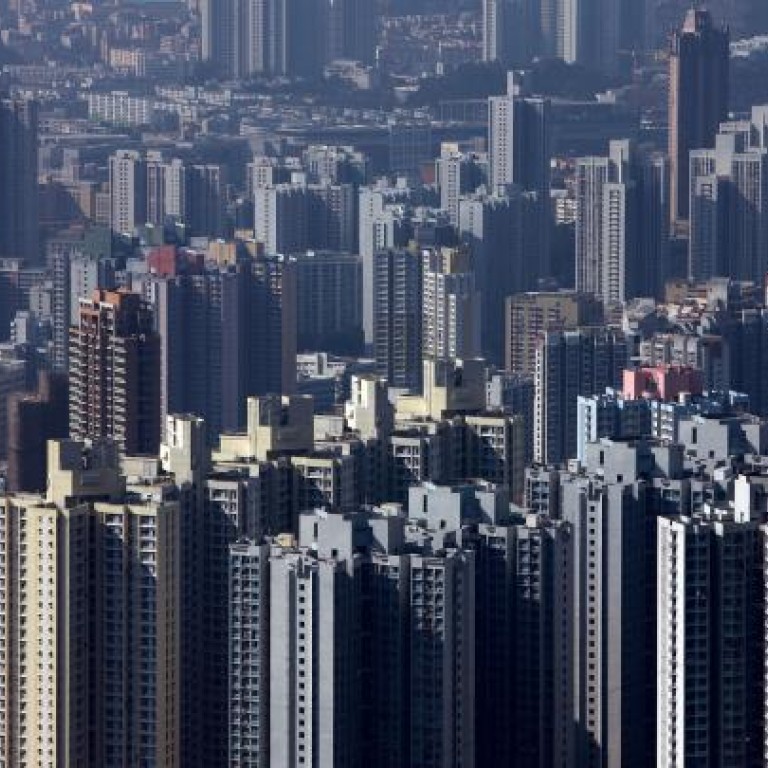
HKMA measures put Hong Kong in good stead to weather property plunge
City would not suffer as severely as in the past from a collapse in home prices because of limits on the amount of debt owners can take out
Last week, I offered three specific suggestions to address the high property prices head-on. As when any new measures are introduced, some stakeholders are bound to be affected.
With the Hong Kong economy heavily skewed towards property investment, the suggestion to increase rates would provide a substantial source of recurrent revenue for the government, unlike stamp duty and land sales, which can fluctuate greatly.
While no one likes to remember painful market adjustments, Hong Kong has had its share of calamities in the past 15 years. In 1997, the city survived the Asian financial crisis only to be hit in 2003 with Sars. Given the severe economic downturn following both, how quickly have Hongkongers forgotten about the dramatic fall in home prices from 1997 to 2003, when they dropped by nearly 70 per cent.
In addition, nearly 50 per cent of homeowners with a first lien, and some with second mortgages, were plunged into negative equity. Many homeowners thought their properties would never see the "light of day" again.
This week I want to focus on the wider impact for Hong Kong of any property price adjustment and the implications for homeowners plunged into negative equity again.
The issues surrounding negative equity seem to arise alongside conversations relating to property bubbles. With property prices in Hong Kong generally exceeding the levels last seen in 1997, many are quite concerned about the implications of a sharp downward price adjustment.
As in 2003, when the city was saddled with its fair share of negative equity, there are now millions of borrowers in negative equity globally, primarily in the United States and Europe. The latest figures show more than 10 million homes in the US are still "upside down" (where the mortgage is larger than the home's value), and millions across the EU.
Moreover, in the past five years, as home prices were falling around the world, prices in Hong Kong have more than doubled.
So how would a significant fall in property prices affect Hong Kong? Not much, and here's why.
In late 2009, the Hong Kong Monetary Authority (HKMA) began taking concrete and measured steps to reduce the systemic risk in the banking system by lowering the maximum loan-to-value (LTV) ratio for residential properties. As well as its core mandate of prudential banking supervision, the HKMA also began to apply measures to address individual borrower's risk.
Specifically, the banking regulator required banks to stress-test each individual borrower's ability to meet the monthly payments at an interest rate higher than current levels, since nearly all mortgages have floating-rate interest payments linked to either the prime rate or the Hong Kong interbank offered rate (Hibor).
Rather than purely protecting the banking industry through lower LTV ratios, the HKMA now requires banks to pay attention to a borrower's ability to meet future higher mortgage payments. Specifically, this stress test focuses on a borrower's ability to sustain an increase of 3 percentage points in the mortgage rate without exceeding a stated cap on the borrower's debt-to-income (DTI) ratio.
However, measuring a borrower's capacity to repay based on their DTI ratio does have its shortcomings. Most notably, the ratio is interest-rate sensitive and can be manipulated by the borrower.
In a low-interest-rate environment, a borrower's monthly payment is low and the DTI ratio skewed downwards.
The imposition of a 3 percentage point stress test does mitigate the low-interest-rate effect, but still does not fully reflect the level of interest rates during the mid-1990s, when base interest rates were about 5 percentage points higher and the corresponding mortgage rates 8 percentage points higher. A borrower can also manipulate their DTI ratio simply by extending the maturity of their mortgage.
Increasing the maturity will lower the monthly payment and reduce the DTI ratio.
Pan Asian Mortgage believes a more effective way to evaluate a borrower's capacity to meet higher mortgage payments is to use two leverage ratios: a mortgage debt leverage ratio (total mortgage amount divided by borrower's annual income), and a total debt multiple leverage ratio (total mortgage plus consumer debt amount divided by borrower's annual income).
These two measures, which are insensitive to interest rates and borrower manipulation, provide an excellent profile of a borrower's leverage.
We believe this broader shift by the HKMA is laudable, as it tries to prevent consumers from taking on too much debt.
From a negative-equity perspective, we are confident that with any fall in property prices, Hong Kong will not experience the same magnitude of negative equity as 10 years ago.
First, the average LTV ratio of new mortgages granted has been trending downward (according to the HKMA, the average LTV ratio of newly approved mortgages was 55.7 per cent in February this year), even though the penetration rate and take-up of higher-LTV-ratio mortgage products, primarily mortgage insurance and developer second mortgages, have increased.
Second, at current interest rates, the amortisation, or repayment of principal, is much faster because a larger percentage of the mortgage payment is used to pay down the outstanding principal. Therefore, even with a 50 per cent reduction in property prices, two-thirds the magnitude of the 1997-2003 property crash, only a few thousand homeowners would be in negative equity.
While a repeat of this negative- equity situation would be unfortunate, mortgagors are in a much stronger position today to continue meeting their monthly mortgage obligations, even with a sharp rise in interest rates. With lower initial LTV ratios on individual mortgages, the LTV ratios would only nominally reach above 100 per cent as compared to the 160 to 180 per cent LTV ratios in 2003.
